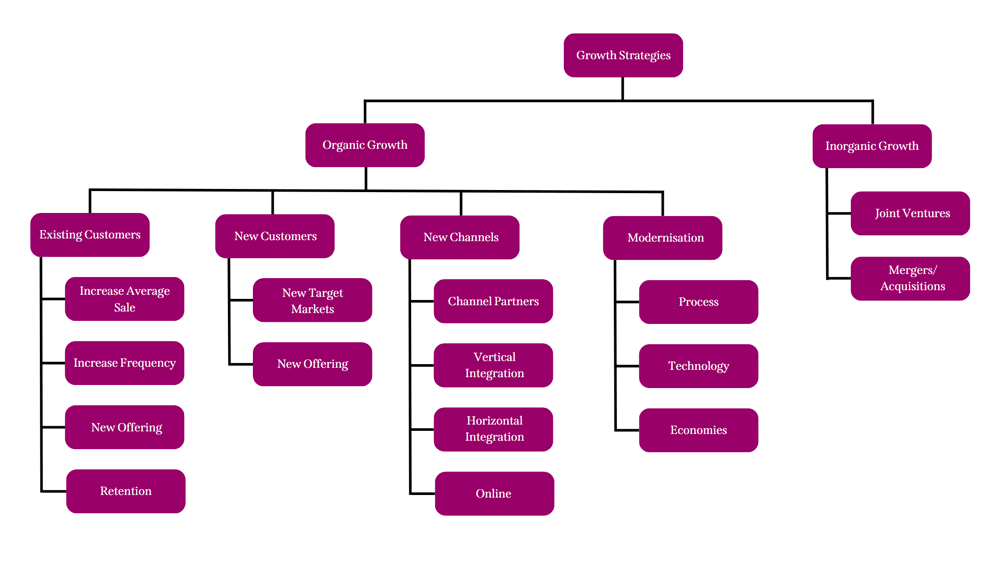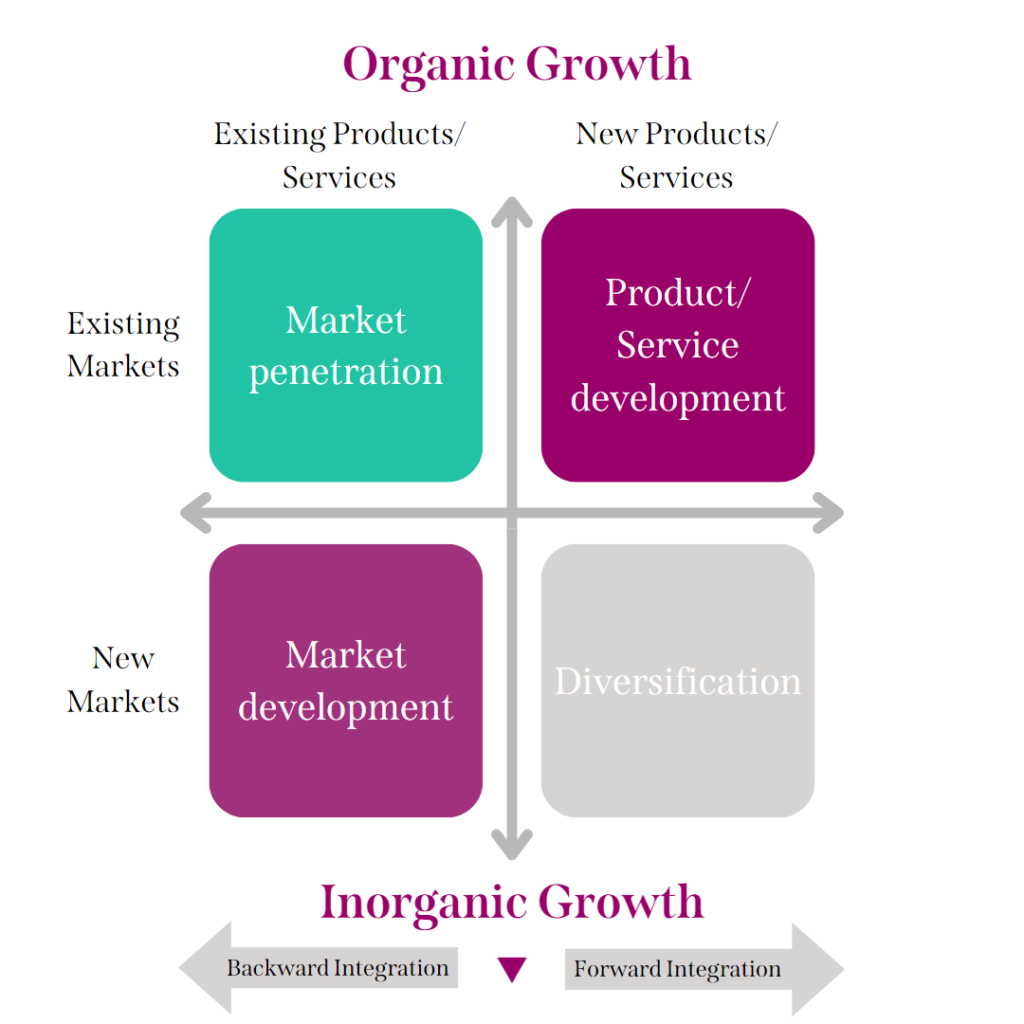
Growth is essential for any business that wants to survive and thrive in a competitive market. But how can a business achieve growth? What are the different types of growth strategy that a business can use? And what are the advantages and disadvantages of each one?
In this blog post, we will explore some of the most common types of business growth strategy that businesses use, including organic growth and inorganic growth. We will also provide some examples of how these strategies work in practice.
What is a business growth strategy?
A growth strategy is a detailed outline that lists the actions businesses plan to take to expand operations, increase revenue and boost market reach. With a growth strategy, an organization evaluates its financial, market and industry positions to establish clear objectives that help the business develop over time.
It can be based on various factors, such as customer needs, competitive advantages, product innovation, market trends, technological changes and more. A growth strategy can also involve different levels of risk and investment depending on the goals and resources of the business.
What are the types of business growth strategy?
There are many ways to classify different types of business growth strategy, but one common way is based on whether the growth is organic or inorganic.
The diagrams show how this works in practice:
A breakdown of organic and in-organic growth

Organic and in-organic strategies

Organic growth
Organic growth refers to increasing sales and revenue by using existing resources and capabilities within the business. Organic growth typically involves improving or expanding existing products or services, reaching new customers or markets with existing offerings or creating new offerings for existing markets.
Some examples of organic growth strategies include:
- Market development:
This strategy focuses on increasing sales by targeting new demographics or geographic areas with existing products or services. - Product development:
This strategy focuses on creating new products or services or enhancing existing ones to meet customer needs better or differentiate from competitors. - Market penetration:
This strategy focuses on increasing sales by capturing more market share with existing products or services. This can involve lowering prices, increasing marketing efforts, improving customer service or loyalty programs, or offering discounts or incentives. - Innovation:
This strategy focuses on creating new products or services that disrupt existing markets or create new ones by solving problems in novel ways.
The advantages of organic growth:
- It allows the business to maintain control over its operations and culture
- It preserves the brand identity and reputation
- It builds customer loyalty and trust
- It enhances core competencies and capabilities
- It reduces dependency on external factors
The disadvantages of organic growth:
- It can be slow and costly
- It can be difficult to achieve in saturated or mature markets
- It can require significant research and development investment
- It can face resistance from internal stakeholders or customers
Inorganic Growth
Inorganic growth refers to increasing sales and revenue by acquiring or merging with other businesses or assets outside the organization.
Inorganic growth typically involves buying competitors, suppliers, distributors, customers, or complementary businesses.
Some examples of inorganic growth strategies include:
- Horizontal integration:
This strategy involves acquiring businesses that operate in the same industry or market as the acquirer. The goal is to eliminate competition, increase market share, achieve economies of scale, or access new technologies or capabilities. - Vertical integration:
This strategy involves acquiring businesses that operate at different stages of the production or distribution chain as the acquirer. The aim of this strategy is to reduce costs, improve quality, control supply, or enhance differentiation. - Diversification:
This strategy involves acquiring businesses that operate in different industries or markets than the acquirer. The goal is to reduce risk, exploit synergies, access new customers or opportunities, or leverage core competencies.
The advantages of inorganic growth:
- It can increase market share and customer base quickly
- It can diversify product portfolio and revenue streams
- It can help to access new technologies, skills, and resources
- It can reduce costs and increase efficiency through economies of scale and scope
- It can enhance competitive advantage and bargaining power
The disadvantages of inorganic growth:
- It could be that you end up overpaying for the target company or asset
- It could face legal and regulatory hurdles and scrutiny
- It could encounter cultural clashes and integration issues
- It could lose focus on core competencies and innovation
- It could dilute brand identity and reputation
- It could increase debt burden and financial leverage
In summary
Organic and in-organic business growth strategies are two ways of expanding a company’s market share, revenue, and profits.
Organic growth refers to increasing sales by developing new products, improving existing ones, or entering new markets. In-organic growth refers to acquiring or merging with other businesses that have complementary products, customers, or resources.
Both strategies have advantages and disadvantages depending on the company’s goals, industry, and competitive environment.
Make a strategic change in your business
If you are looking to drive more sales, increase profit, and improve your business’ performance then our Strategic Business Review will help you identify where more sales can be made, how to maximise your profits, and improve your business’ performance.
Find out more about the Find out more about our Strategic Business Review →
Author

Chris Leadley
chris.leadley@forbesburton.com
Related Articles
We're here for you.
As a dedicated team of Advisers and Consultants our aim is to help you fix the issues and solve the problems within your business.
Find out more →

